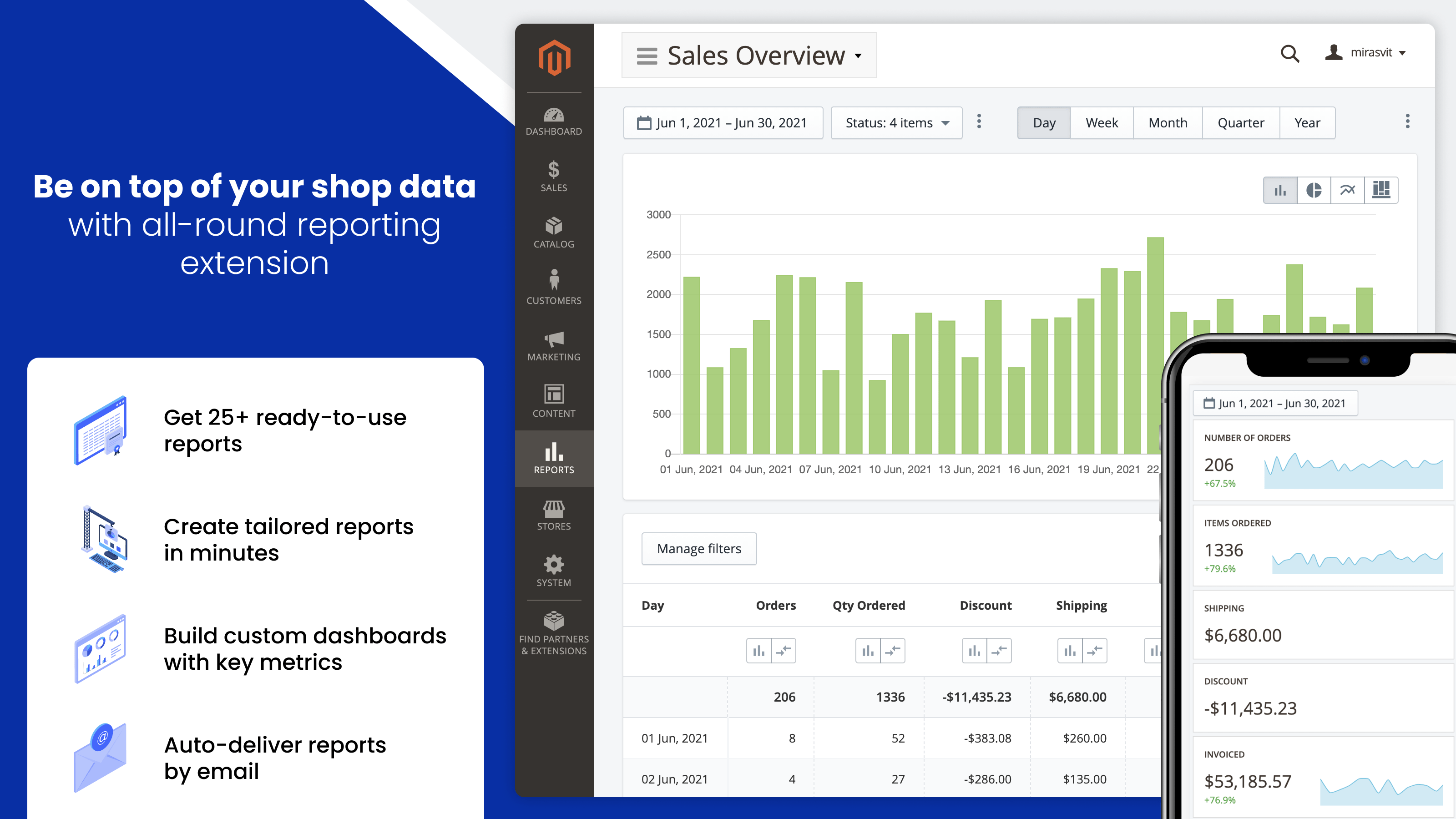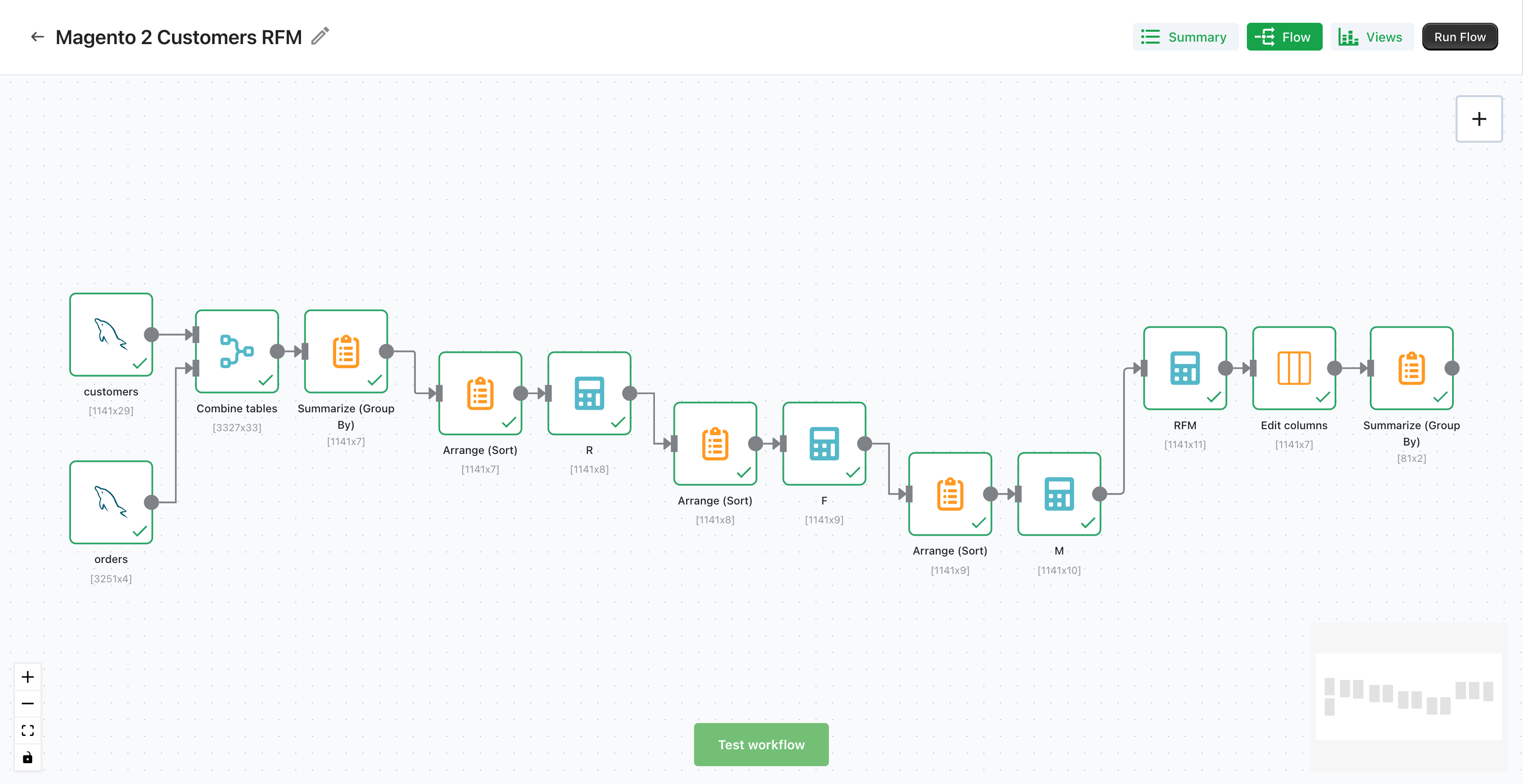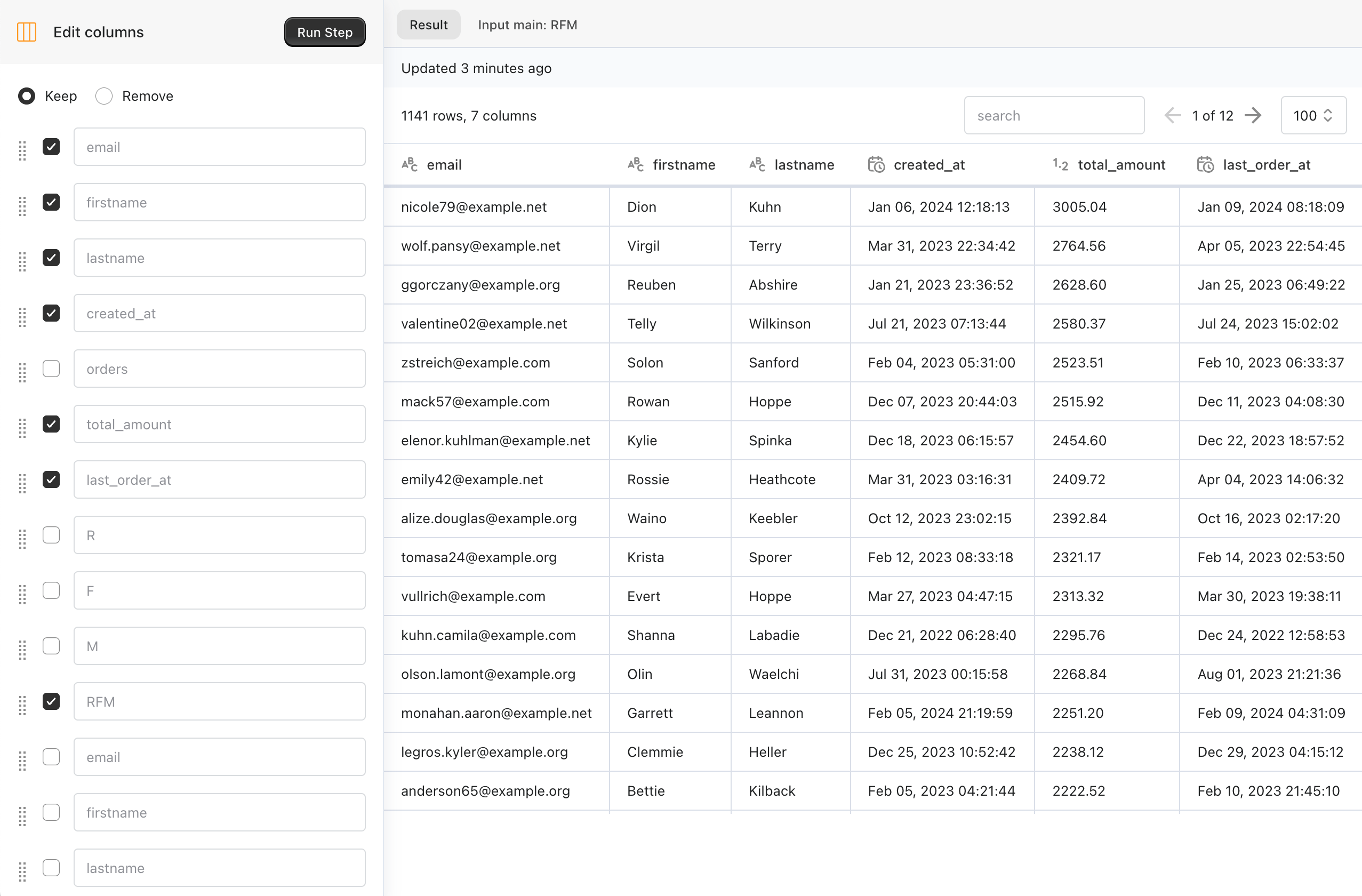Magento 2 Reporting and Reporting Automation
From extensions to SaaS, from schema to node-based systems... all focused solely on data.
Magento 2 has been a leader in the e-commerce platform market for many years. Despite the growing popularity of alternative platforms like Shopify and Shopware, it remains the market leader with a stable community and code base.
However, some aspects of the platform are only developed in basic directions and do not cover most of the modern requirements of online store owners. Even the recent changes in Magento (Adobe, cloud, on-prem) don’t change the fact that every Magento 2 store requires some “extras” to be better.
Importance of Reporting and Data Analysis in E-commerce
One of the underdeveloped features of the Magento 2 platform is report building. In its standard configuration (vanilla codebase), Magento offers a dozen different reports, mostly covering sales data.
However, in practice, these reports are of little use as they are static (without the ability to edit data selections (internal filtration) and visualization (modify columns).
On the other hand, the reporting requirements of online store owners are both quite typical (ease of use, data accuracy, real-time) and very specific (sales counting for configurable products, subscriptions, etc.).
We want to describe and explain the two different approaches to building reports for Magento 2 based on our experience (we have built reports for more than 3,000 clients (Magento 2, Magento 1, Shopify) around the world over the last 10 years).
Magento 2 Reporting Extensions
Let's start with a well-known theme for all Magento 2 store owners - extensions.
Fortunately, Magento 2 supports functionality extensions through extensions/modules/plugins that can significantly expand the platform's capabilities and modify the logic of most processes.
In the case of reporting, there are enough modules that can meet most reporting needs, such as the Mirasvit Advanced Reports extension. This module, like similar ones, has over 20 built-in reports and the ability to create custom reports using predefined columns.

In most cases, modules like Mirasvit Advanced Reports fill the gap in necessary reports for Magento 2 store owners. However, a significant percentage of reports/tasks cannot be implemented using any of the existing third-party extensions.
We can highlight three key limitations of all these extensions:
- Data. There are many reports that require additional data or data from other systems. For example, if you need a report that uses data from both Magento 2 and Google Sheets or a CSV file, Magento 2 reporting extensions won’t suffice. Similarly, if you want to combine data from Magento 2 and Google Analytics, you’ll need an alternative to extensions.
- Data Transformation. Complex reports that cannot be built with a single SQL query are also a challenge for extensions. For example, RFM analysis, ABC classification of products based on sales, and even simple sales reports with specific logic.
- Result Processing. The third criterion that limits the use of extensions is further interaction. Having a report and the ability to use it conveniently are not the same. If you need to automatically export reports to Google Sheets, send them by email, or aggregate several reports into one PDF file, extensions won’t be suitable.
To summarize our experience with reporting extensions: in most cases, extensions are suitable for reporting if all required information is in your database.
Software as a Service for Reporting Automation in Magento 2
One alternative to using Magento 2 reporting extensions is working with SaaS services, which by default offer significantly more features than any top Magento 2 reporting module.
Why SaaS Solutions?
The answer is quite simple: SaaS solutions are not tied to a specific platform or server, thus providing far more capabilities for their clients. Moreover, they operate on their servers optimized specifically for reporting tasks and have all the necessary additional programs installed.
And there are many different alternatives as well, ranging from classic reporting builders (with predefined database schemas) to well-known, yet still modern and relevant approaches like node/step-based report building.
We don’t cover different reporting solutions with 'AI' prefixes or suffixes, because in my opinion, they use 'AI' just for marketing purposes.
Step-by-step Report Building
Mipler Reporting Flow allows building various reports through sequential data transformations. Starting with raw data (e.g., table data), you step-by-step transform it to get the desired report.
For example, to select the top 10 customers by sales for the last year, you need to perform the following sequence of steps:
- Load the customer list.
- Load the order list.
- Filter orders for the last year only.
- Merge tables by customer_id.
- Group data by customer_id with aggregation by order sum.
- Sort data by order sum.
- Select the top 10 results.
- Choose only the necessary columns.
As one of our customers described Mipler Flow: "Mipler Flow is basically Excel with node-based visual programming and data interfaces. It’s very, very good for manipulating datasets, which is hard to do with any other tools."

Reporting and Reporting Automation for Magento 2
In its basic form, the result of executing a sequence of steps (flow) is just a table. However, using various display modifiers (views), this table can be presented in dozens of different ways to understand the data from different perspectives.
These can be pivot tables, aggregated tables, charts, etc. A flow can also produce several tables as a result (e.g., the top 10 best-selling products, the top 10 worst), or even a table with results and a ready-to-download Excel file.

Conclusion
There are many options for creating custom reports for Magento 2, from built-in functionality and extensions to third-party reporting services. Each of these approaches has its advantages and disadvantages. The choice primarily depends on the data sources for the reports (only Magento 2 or a set of data from different sources/systems) and the complexity of the report itself. In any case, you should consider different approaches when making your choice.
For the description, we used Mirasvit Advanced Reports as a top module for creating reports for Magento and Mipler Data Reporting Flow as a SaaS solution for report building. Although these two systems are fundamentally different, the result in both cases should be reports that solve the tasks set before the e-commerce business.